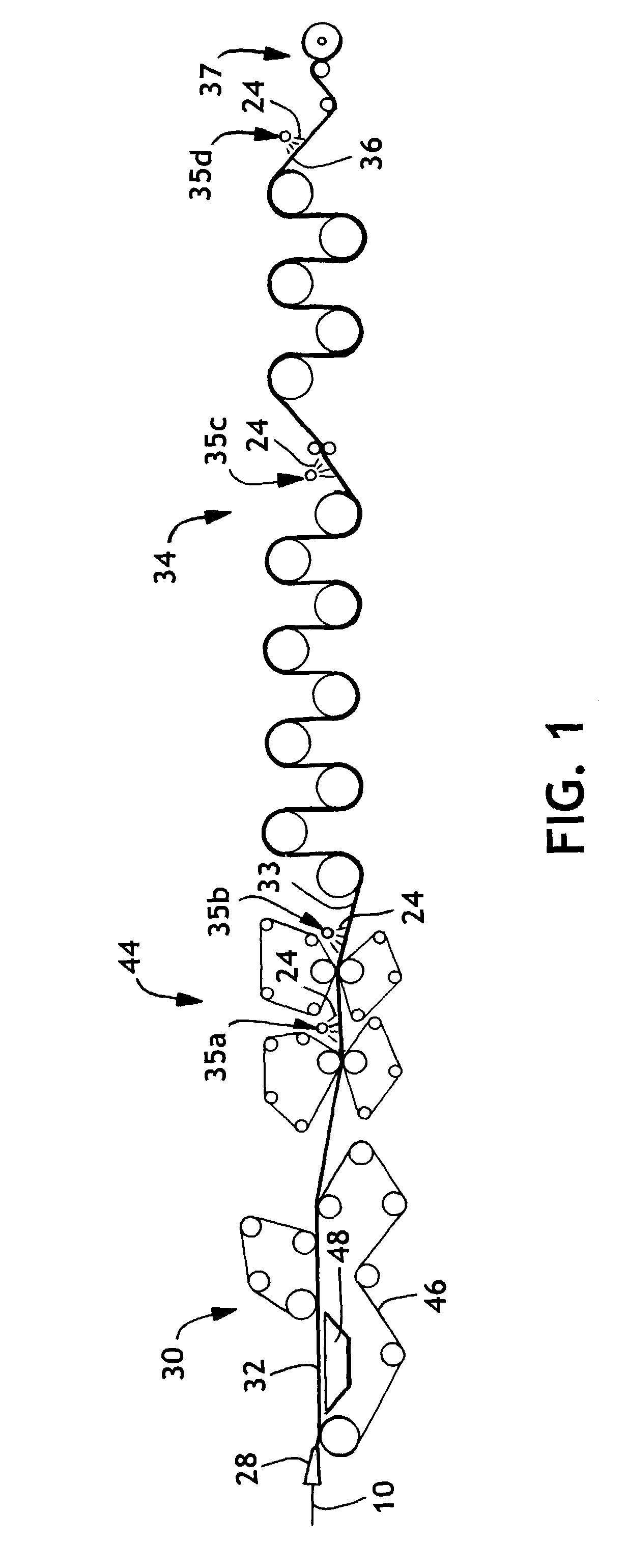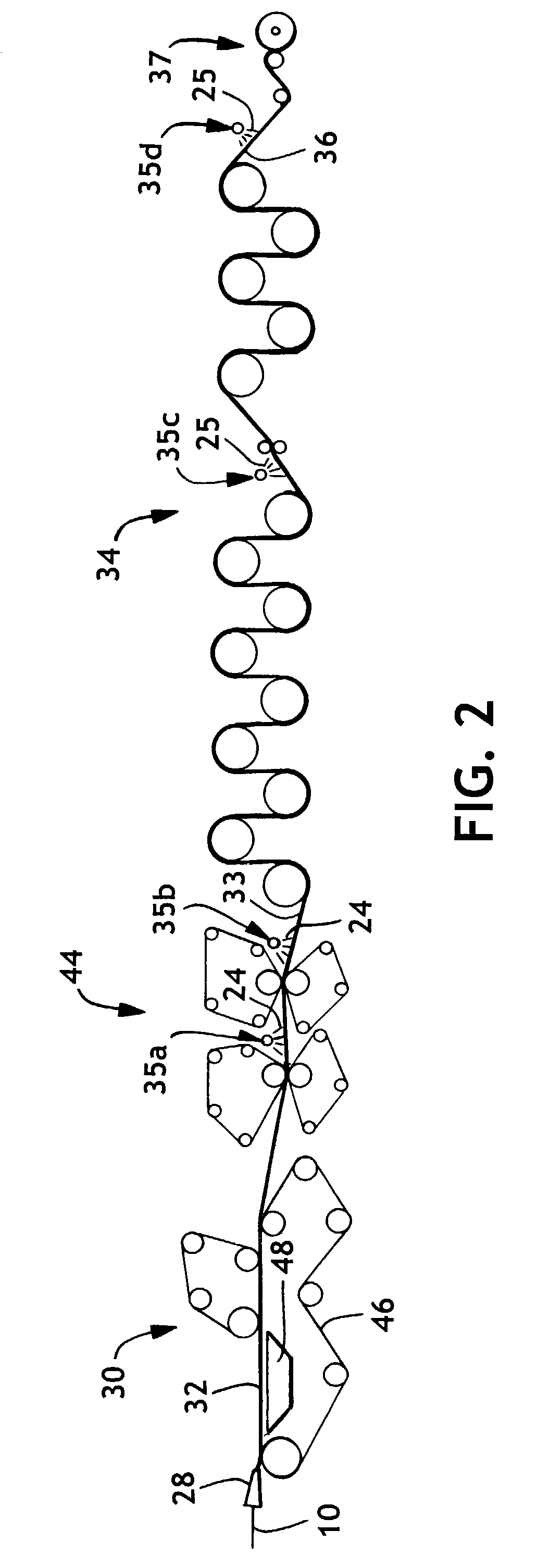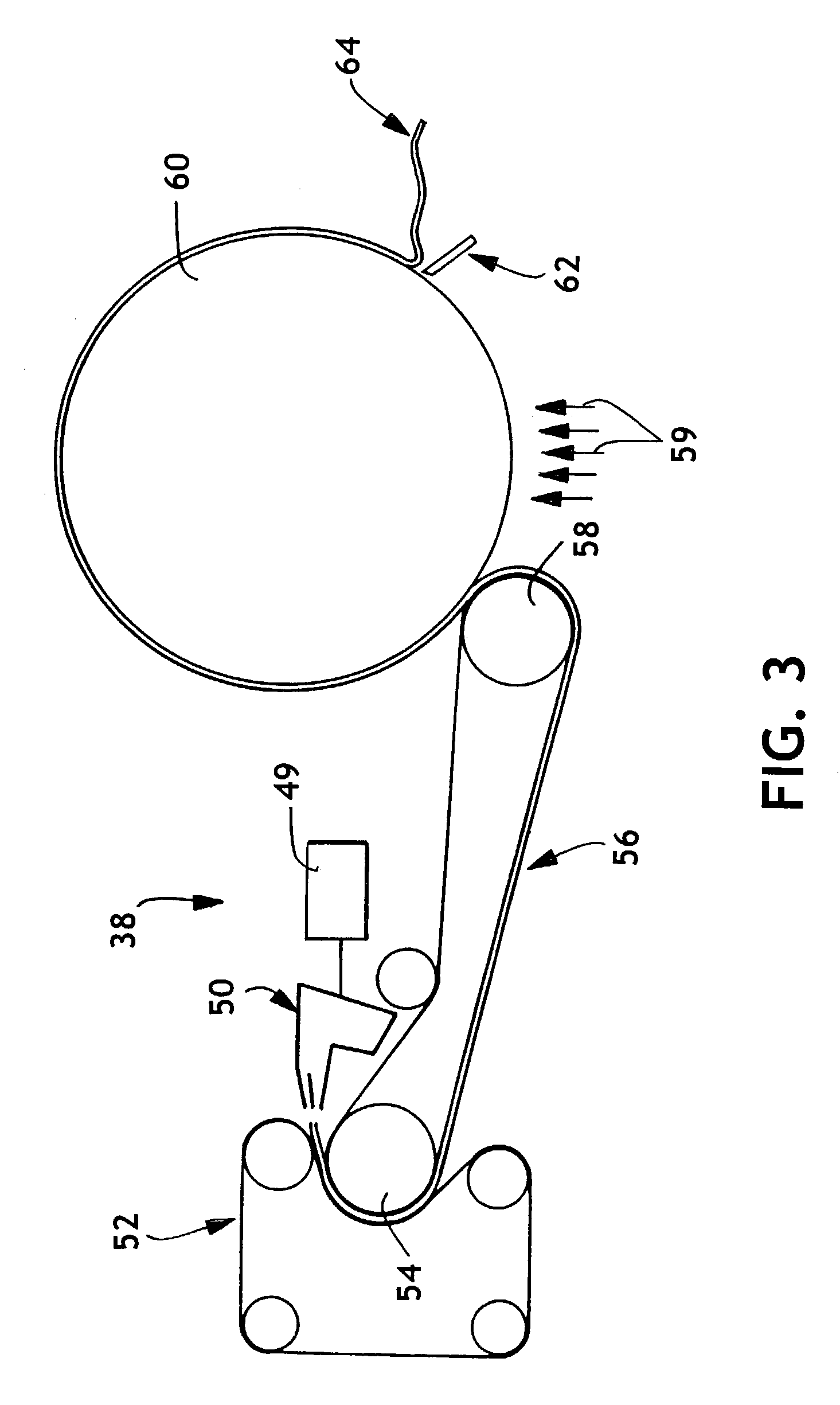Method for applying water insoluble chemical additives with to pulp fiber
- Summary
- Abstract
- Description
- Claims
- Application Information
AI Technical Summary
Benefits of technology
Problems solved by technology
Method used
Image
Examples
example 1
[0083]The untreated pulp in this example is a fully bleached eucalyptus pulp fiber slurry with a pH value of 4.5. Referencing FIG. 1, this fiber was formed into a mat at a basis weight of 900 grams oven-dry pulp per square meter, pressed and dried to approximately 85 percent solids. Next, neat polydimethylsiloxane, commercially available as DC-200 silicone from Dow Corning Corporation, located in Midland, Mich., was size pressed onto the fiber mat. The size press was operated at 15 pli with the liquid being applied only to bottom roll. The rolls of the nip were comprised of a hard rubber on the bottom and Durarock on the top. The amount of the chemical applied to the mat was approximately 43 kilograms per metric ton of eucalyptus fiber. This amount was determined through the analytical gas chromatography method previously described. The chemical was allowed to remain on the pulp mat for 2 weeks after which it was dispersed to approximately 1.2 percent solids with water at approximat...
example 2
[0085]Similar to Example 1 with the exception the chemical applied was a derivatized polysiloxane, DC Q2 8220, available from Dow Corning Corporation, located in Midland, Mich. The polysiloxane was applied at a 100 percent actives content at an add-on level of approximately 63 kg / MT.
example 3
[0086]Similar to Example 1 with the exception the chemical applied was mineral oil, commercially available as Drakeol 7 Lt, commercially available from Penreco, located in Los Angeles, Calif. The mineral oil was applied at a 100 percent actives content at an add-on level of approximately 85 kg / MT.
PUM
| Property | Measurement | Unit |
|---|---|---|
| Fraction | aaaaa | aaaaa |
| Fraction | aaaaa | aaaaa |
| Fraction | aaaaa | aaaaa |
Abstract
Description
Claims
Application Information
 Login to View More
Login to View More - R&D
- Intellectual Property
- Life Sciences
- Materials
- Tech Scout
- Unparalleled Data Quality
- Higher Quality Content
- 60% Fewer Hallucinations
Browse by: Latest US Patents, China's latest patents, Technical Efficacy Thesaurus, Application Domain, Technology Topic, Popular Technical Reports.
© 2025 PatSnap. All rights reserved.Legal|Privacy policy|Modern Slavery Act Transparency Statement|Sitemap|About US| Contact US: help@patsnap.com



